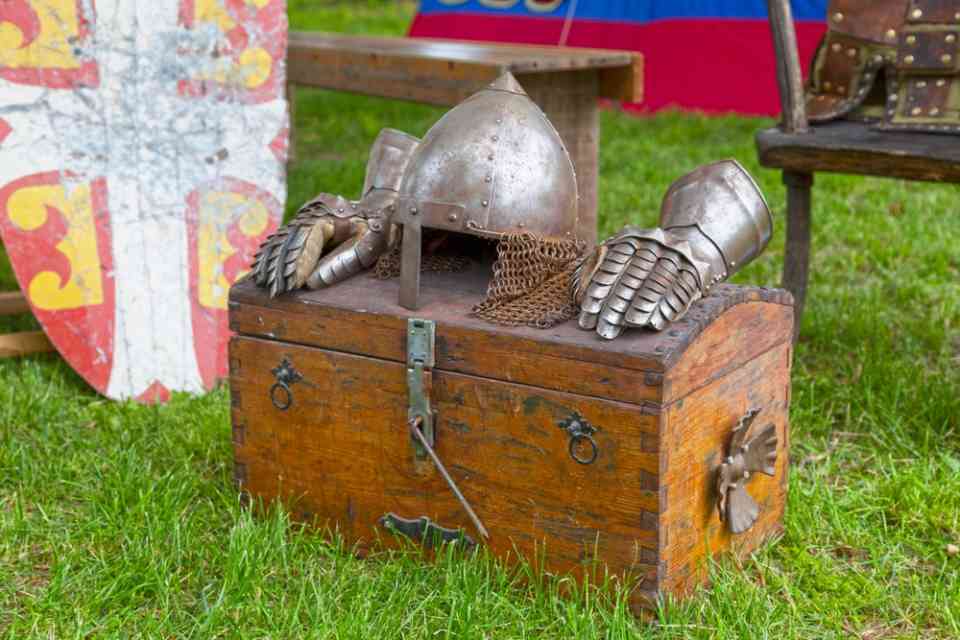Revealed: The Last Rulers Of The Most Powerful Empires In History

It seems that the times of the British Empire are now fading away, and this idea was presented by King Charles as well on the occasion of the transfer of Hong Kong to China in 1997. He called it “the end of the Empire” after her 60-year reign as the UK’s longest-serving monarch – Queen Elizabeth II- had come to an end.
The downfall of empires at different times has happened in many ways – some empires were torn apart by major uprisings while others faded slowly out of the memory of history. In 1453, after a thousand years, the Byzantine Empire fell with the capture of Constantinople and the death of emperor Constantine XI Paleologos following a battle with the Muslim armies.
Likewise, the Holy Roman Empire, which had been alive for ten centuries, was effectively ended by Napoleon’s edict in the early 19th century. At the turn of the twentieth century, several empires ruled over large areas in Africa, Asia, and America as their colonies. Nevertheless, power pursuits on behalf of empires led to World War I, which in turn caused the collapse of imperialism in Germany, Russia, Austria-Hungary, and the Ottoman Empire while instigating the Japanese Empire’s ambition.
Similarly, empires that traced their beginnings back to ‘The Age of Discovery,’ like those of Portugal and Spain, disappeared not long ago. Marking the end of this era of empire is the British Empire, which dates back to the same age. Its legacy includes both achievements (expansion of global trading) and drawbacks like cultural suppression, environmental degradation, or even problems related to domestic conflict. CEOWORLD magazine lets you sneak peek into those eternal rulers.
- Cleopatra VII Philopator was crucial to Roman politics as they moved from being a republic to an empire. In 30 B.C., Egypt came under Roman rule following her affairs with Julius Caesar and Mark Antony.
> Reign: 51-30 B.C.
> Empire: Egyptian
> Empire duration: 3100 B.C.-30 B.C.
- King Gongyang of Goryeo was overthrown and deposed by Yi Sunggye, who went on to establish the Joseon kingdom in Korea.
> Reign: 1389-1392
> Empire: Goryeo (Korea)
> Empire duration: 918-1392 - While Constantine XI Palaiologos, the last Byzantine emperor, heroically fought off the Ottomans from Constantinople and died in battle, he was later called “the Marble” emperor.
> Reign: 1449-1453
> Empire: Byzantine
> Empire duration: 330-1453 - The last Aztec emperor, Cuauhtémoc, capitulated to Hernán Cortés following the siege of Tenochtitlan. In an expedition, he was hanged after undergoing torture and refusing to divulge the locations of the Aztek treasure.
> Reign: 1520-1521
> Empire: Aztec
> Empire duration: 1345-1521 - The last Inca emperor, Atahualpa, was defeated by the Spanish led by “Francisco Pizarro.” He was captured and paid a ransom before he was eventually executed.
> Reign: 1532-1533
> Empire: Incan
> Empire duration: 1410-1533 - The empire was very large, and Askia Ishaq II saw it fall when Moroccans marched on it armed with guns.
> Reign: 1588-1591
> Empire: Songhai
> Empire duration: circa 1464-1591 - The Mali Empire came to an end during the early 17th century when Mahmud Keita IV lost a critical battle with Morocco, hence the empire’s downfall.
> Reign: circa 1590-circa 1610
> Empire: Malian
> Empire duration: 1230-1600 - Frederick I marked the end of the Swedish Empire in 1721 following the Great Northern War and the Treaty of Nystad, concluding Sweden’s influence in the Baltic region.
> Reign: 1720-1721
> Empire: Swedish
> Empire duration: 1611-1721
- Francis II marked the conclusion of the Holy Roman Empire in 1806, ending a millennium-long dominion. Napoleon’s formation of the Confederation of the Rhine and the secession of German states led Emperor Francis II to renounce the Holy Roman Empire crown.
> Reign: 1792-1806
> Empire: Holy Roman
> Empire duration: 800-1806
- Bahadur Shah Zafar II, the final ruler of the Mughal Empire, faced exile to Burma after the British suppressed the 1857 Indian Rebellion.
> Reign: 1837-1857
> Empire: Mughal
> Empire duration: 1526-1857
- Alfonso XIII witnessed the decline of the Spanish Empire, losing significant territories and facing economic setbacks, leading to the establishment of the Second Republic in 1931.
> Reign: 1902-1931
> Empire: Spanish
> Empire duration: 1492-1931
- Puyi, the last Qing Dynasty emperor, abdicated in 1912, marking the end of China’s imperial system. He later served as a puppet emperor in Manchuria during World War II.
> Reign: 1908-1912
> Empire: Chinese
> Empire duration: 221 B.C.-1912
- Tsar Nicholas II’s abdication in 1917 concluded the Russian Empire, with the Bolsheviks seizing power and executing the Romanov dynasty.
> Reign: 1894-1917
> Empire: Russian
> Empire duration: 1721-1917
- Charles I renounced the Austro-Hungarian throne in 1918, signaling the dissolution of the empire amid post-World War I geopolitical shifts.
> Reign: 1916-1918
> Empire: Austria-Hungarian
> Empire duration: 1867-1918
- Kaiser Wilhelm II’s abdication in 1918 marked the end of the German Empire, a consequence of its role in World War I and internal unrest.
> Reign: 1888-1918
> Empire: German
> Empire duration: 1871-1918
- Mehmed VI, the last Sultan of the Ottoman Empire, faced nationalist movements, administrative issues, and military defeats, ultimately abdicating in 1922 as the empire crumbled.
> Reign: 1918-1922
> Empire: Ottoman
> Empire duration: circa 1300-1922
- Benito Mussolini, known as Il Duce, aspired to revive a modern Roman Empire during his leadership of Italy from 1922 to 1943. His aggressive actions included the invasion of Ethiopia in 1935 and an ill-fated campaign against Greece. Italian military failures, coupled with Allied invasions, led to Mussolini’s ousting in 1943.
> Reign: 1922-1943
> Empire: Italian
> Empire duration: 1922-1943
- Hirohito, reigning from 1928 to 1947, symbolized the Japanese Empire’s era that began in 1868. Japan’s expansion in Asia, including the invasion of China and attacks on Allied territories, ended with the empire’s surrender in 1945. Hirohito retained a titular role until his death in 1989, but the empire effectively concluded with Japan’s postwar constitution in 1947.
> Reign: 1928-1947
> Empire: Japanese
> Empire duration: 1868-1947
- Queen Juliana oversaw the Dutch Empire from 1948 to 1980, witnessing the decolonization process. The Netherlands, once a colonial powerhouse, relinquished most colonies after World War II. Suriname gained independence in 1975, marking the end of Dutch imperial holdings.
> Reign: 1948-1980
> Empire: Dutch
> Empire duration: 1595-1975
- Queen Elizabeth II, reigning since 1952, represents the British Empire, which began in 1584 and substantially declined by 1997. The empire faced losses in Africa and Asia, and the handover of Hong Kong to China in 1997 marked a significant milestone in its conclusion.
> Reign:
> Empire: British
> Empire duration: 1584-1997
- Jorge Sampaio presided over the Portuguese Empire’s final chapter from 1415 to 1999. Portugal, with global explorers like Vasco de Gama, had a vast empire spanning Africa, Asia, and South America. However, by the 20th century, decolonization had led to the loss of many colonies, including Macao, which was handed over to China in 1999. Sampaio’s presidency coincided with the end of Portugal’s imperial history.
> Reign:
> Empire: Portuguese
> Empire duration: 1415-1999
These leaders and the empires they represented experienced historical shifts, marking the end of significant eras and paving the way for new geopolitical landscapes.
Have you read?
Character – The Aerodynamics of Leadership.
The Rise of the Inter-Generational CEO: Working with Gen Z eye to eye.
A New Approach to Public Sector Decision Making.
How a CEO Can Best Handle a Crisis.
Redefining Thankfulness: Gratitude Examples for the Forward-Thinking Leader.
Financial Services, Risk Management and Beyond — Tech Entrepreneur, Henna Karna’s Vision for the Future.
Bring the best of the CEOWORLD magazine's global journalism to audiences in the United States and around the world. - Add CEOWORLD magazine to your Google News feed.
Follow CEOWORLD magazine headlines on: Google News, LinkedIn, Twitter, and Facebook.
Copyright 2025 The CEOWORLD magazine. All rights reserved. This material (and any extract from it) must not be copied, redistributed or placed on any website, without CEOWORLD magazine' prior written consent. For media queries, please contact: info@ceoworld.biz








